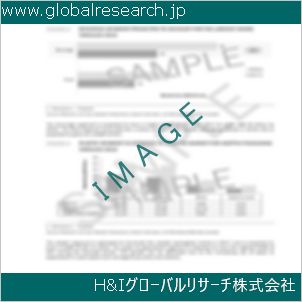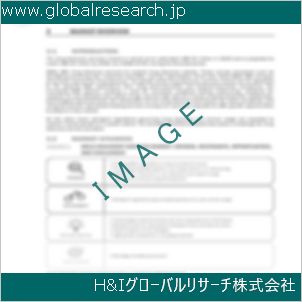Table of Contents
1 Industry Overview of Cryolite
1.1 Definition and Specifications of Cryolite
1.1.1 Definition of Cryolite
1.1.2 Specifications of Cryolite
1.2 Classification of Cryolite
1.3 Applications of Cryolite
1.3.1 Nuclear Application
1.3.2 Non-Nuclear Application
1.4 Industry Chain Structure of Cryolite
1.5 Industry Overview and Major Regions Status of Cryolite
1.5.1 Industry Overview of Cryolite
1.5.2 Global Major Regions Status of Cryolite
1.6 Industry Policy Analysis of Cryolite
1.7 Industry News Analysis of Cryolite
2 Manufacturing Cost Structure Analysis of Cryolite
2.1 Raw Material Suppliers and Price Analysis of Cryolite
2.2 Equipment Suppliers and Price Analysis of Cryolite
2.3 Labor Cost Analysis of Cryolite
2.4 Other Costs Analysis of Cryolite
2.5 Manufacturing Cost Structure Analysis of Cryolite
2.6 Manufacturing Process Analysis of Cryolite
3 Technical Data and Manufacturing Plants Analysis of Cryolite
3.1 Capacity and Commercial Production Date of Global Cryolite Major Manufacturers in 2023
3.2 Manufacturing Plants Distribution of Global Cryolite Major Manufacturers in 2023
3.3 R&D Status and Technology Source of Global Cryolite Major Manufacturers in 2023
3.4 Raw Materials Sources Analysis of Global Cryolite Major Manufacturers in 2023
4 Capacity, Production and Revenue Analysis of Cryolite by Regions, Types and Manufacturers
4.1 Global Capacity, Production and Revenue of Cryolite by Regions 2019-2024
4.2 Global and Major Regions Capacity, Production, Revenue and Growth Rate of Cryolite 2019-2024
4.3 Global Capacity, Production and Revenue of Cryolite by Types 2019-2024
4.4 Global Capacity, Production and Revenue of Cryolite by Manufacturers 2019-2024
5 Price, Cost, Gross and Gross Margin Analysis of Cryolite by Regions, Types and Manufacturers
5.1 Price, Cost, Gross and Gross Margin Analysis of Cryolite by Regions 2019-2024
5.2 Price, Cost, Gross and Gross Margin Analysis of Cryolite by Types 2019-2024
5.3 Price, Cost, Gross and Gross Margin Analysis of Cryolite by Manufacturers 2019-2024
6 Consumption Volume, Consumption Value and Sale Price Analysis of Cryolite by Regions, Types and Applications
6.1 Global Consumption Volume and Consumption Value of Cryolite by Regions 2019-2024
6.2 Global and Major Regions Consumption Volume, Consumption Value and Growth Rate of Cryolite 2019-2024
6.3 Global Consumption Volume and Consumption Value of Cryolite by Types 2019-2024
6.4 Global Consumption Volume and Consumption Value of Cryolite by Applications 2019-2024
6.5 Sale Price of Cryolite by Regions 2019-2024
6.6 Sale Price of Cryolite by Types 2019-2024
6.7 Sale Price of Cryolite by Applications 2019-2024
6.8 Market Share Analysis of Cryolite by Different Sale Price Levels
7 Supply, Import, Export and Consumption Analysis of Cryolite
7.1 Supply, Consumption and Gap of Cryolite 2019-2024
7.2 Global Capacity, Production, Price, Cost, Revenue, Supply, Import, Export and Consumption of Cryolite 2019-2024
7.3 USA Capacity, Production, Price, Cost, Revenue, Supply, Import, Export and Consumption of Cryolite 2019-2024
7.4 EU Capacity, Production, Price, Cost, Revenue, Supply, Import, Export and Consumption of Cryolite 2019-2024
7.5 China Capacity, Production, Price, Cost, Revenue, Supply, Import, Export and Consumption of Cryolite 2019-2024
7.6 Japan Capacity, Production, Price, Cost, Revenue, Supply, Import, Export and Consumption of Cryolite 2019-2024
8 Major Manufacturers Analysis of Cryolite
8.1 Manufacturer One
8.1.1 Company Profile
8.1.2 Product Picture and Specifications
8.1.2.1 Type I
8.1.2.2 Type II
8.1.2.3 Type III
8.1.3 Capacity, Production, Price, Cost, Gross and Revenue
8.1.4 Contact Information
8.2 Manufacturer Two
8.2.1 Company Profile
8.2.2 Product Picture and Specifications
8.2.2.1 Type I
8.2.2.2 Type II
8.2.2.3 Type III
8.2.3 Capacity, Production, Price, Cost, Gross and Revenue
8.2.4 Contact Information
8.3 Manufacturer Three
8.3.1 Company Profile
8.3.2 Product Picture and Specifications
8.3.2.1 Type I
8.3.2.2 Type II
8.3.2.3 Type III
8.3.3 Capacity, Production, Price, Cost, Gross and Revenue
8.3.4 Contact Information
8.4 Manufacturer Four
8.4.1 Company Profile
8.4.2 Product Picture and Specifications
8.4.2.1 Type I
8.4.2.2 Type II
8.4.2.3 Type III
8.4.3 Capacity, Production, Price, Cost, Gross and Revenue
8.4.4 Contact Information
8.5 Manufacturer Five
8.5.1 Company Profile
8.5.2 Product Picture and Specifications
8.5.2.1 Type I
8.5.2.2 Type II
8.5.2.3 Type III
8.5.3 Capacity, Production, Price, Cost, Gross and Revenue
8.5.4 Contact Information
…
9 Marketing Trader or Distributor Analysis of Cryolite
9.1 Marketing Channels Status of Cryolite
9.2 Traders or Distributors with Contact Information of Cryolite by Regions
9.3 Ex-work Price, Channel Price and End Buyer Price Analysis of Cryolite
9.4 Regional Import, Export and Trade Analysis of Cryolite
10 Industry Chain Analysis of Cryolite
10.1 Upstream Major Raw Materials Suppliers Analysis of Cryolite
10.1.1 Major Raw Materials Suppliers with Contact Information Analysis of Cryolite
10.1.2 Major Raw Materials Suppliers with Supply Volume Analysis of Cryolite by Regions
10.2 Upstream Major Equipment Suppliers Analysis of Cryolite
10.2.1 Major Equipment Suppliers with Contact Information Analysis of Cryolite
10.2.2 Major Equipment Suppliers with Product Pictures Analysis of Cryolite by Regions
10.3 Downstream Major Consumers Analysis of Cryolite
10.3.1 Major Consumers with Contact Information Analysis of Cryolite
10.3.2 Major Consumers with Consumption Volume Analysis of Cryolite by Regions
10.4 Supply Chain Relationship Analysis of Cryolite
11 Development Trend of Analysis of Cryolite
11.1 Capacity, Production and Revenue Forecast of Cryolite by Regions and Types
11.1.1 Global Capacity, Production and Revenue of Cryolite by Regions 2024-2029
11.1.2 Global and Major Regions Capacity, Production, Revenue and Growth Rate of Cryolite 2024-2029
11.1.3 Global Capacity, Production and Revenue of Cryolite by Types 2024-2029
11.2 Consumption Volume and Consumption Value Forecast of Cryolite by Regions, Types and Applications
11.2.1 Global Consumption Volume and Consumption Value of Cryolite by Regions 2024-2029
11.2.2 Global and Major Regions Consumption Volume, Consumption Value and Growth Rate of Cryolite 2024-2029
11.2.3 Global Consumption Volume and Consumption Value of Cryolite by Types 2024-2029
11.2.4 Global Consumption Volume and Consumption Value of Cryolite by Applications 2024-2029
11.3 Supply, Import, Export and Consumption Forecast of Cryolite
11.3.1 Supply, Consumption and Gap of Cryolite 2024-2029
11.3.2 Global Capacity, Production, Price, Cost, Revenue, Supply, Import, Export and Consumption of Cryolite 2024-2029
11.3.3 USA Capacity, Production, Price, Cost, Revenue, Supply, Import, Export and Consumption of Cryolite 2024-2029
11.3.4 EU Capacity, Production, Price, Cost, Revenue, Supply, Import, Export and Consumption of Cryolite 2024-2029
11.3.5 China Capacity, Production, Price, Cost, Revenue, Supply, Import, Export and Consumption of Cryolite 2024-2029
11.3.6 Japan Capacity, Production, Price, Cost, Revenue, Supply, Import, Export and Consumption of Cryolite 2024-2029
12 New Project Investment Feasibility Analysis of Cryolite
12.1 New Project SWOT Analysis of Cryolite
12.2 New Project Investment Feasibility Analysis of Cryolite
13 Conclusion of the Global Cryolite (CAS 15096-52-3) Industry 2024 Market Research Report
| ※参考情報 氷晶石(Cryolite)は、化学式 Na3AlF6 で表される鉱物であり、主にナトリウム、アルミニウム、フッ素から成り立っています。この鉱物は、一般に白色または無色の結晶で見られ、母岩中に存在することが多いです。氷晶石は、希少鉱物であり、自然界では主にグリーンランドやアメリカのコロラド州などで見つかっています。 氷晶石の主な特徴の一つは、その独特な結晶構造です。この構造は、ナトリウムイオン、アルミニウムイオン、フッ素イオンが特定の比率で結合しているため、特有の物理的特性を持っています。また、氷晶石は、高い融点や優れた熱伝導性を示し、化学的にも安定した物質であるため、多くの産業において利用されています。 氷晶石の種類としては、主に天然氷晶石と合成氷晶石が存在します。天然氷晶石は、主に地質作用により形成される鉱物で、産地によって微妙に異なる成分を含むことがあります。一方、合成氷晶石は、産業用途に合わせて工業的に製造されたもので、高品質で均一な特性を持つことが求められます。 氷晶石の主な用途は、アルミニウムの製造にあります。アルミニウムの電解精錬において、氷晶石は重要な役割を果たします。このプロセスでは、酸化アルミニウム(アルミナ)を電解すると、アルミニウムが生成されますが、氷晶石を添加することで電解液の融点が下がり、エネルギー効率が向上します。また、氷晶石を添加することにより、電解槽内でのスラグ形成を抑制し、プロセスの安定性を向上させる効果もあります。このため、アルミニウム冶金の分野では、氷晶石は不可欠な素材となっています。 さらに、氷晶石はフッ素化合物の製造にも利用されます。氷晶石から得られるフッ素イオンは、様々な化学プロセスにおいて重要な役割を果たし、特にフッ素化合物の合成においては、酸触媒や反応剤として使用されます。このように、氷晶石は化学産業の中でも幅広い用途がある素材とされています。 氷晶石に関連する技術としては、アルミニウム電解精錬の技術やフッ素化合物の合成技術が挙げられます。これらの技術は、氷晶石の特性を最大限に活かすために進化してきました。例えば、より効率的な電解槽の設計や、新しい電解条件の開発により、従来よりも少ないエネルギーでアルミニウムの生産が可能となるなど、持続可能な製造プロセスが模索されています。 加えて、氷晶石は環境問題とも関連があります。アルミニウム生産においては、大量のエネルギー消費が問題視されていますが、氷晶石を利用することでその消費を抑えることができるため、環境負荷を低減する道が開かれる可能性があります。さらに、氷晶石には、廃棄物処理や環境修復に関する研究も進められており、その特性を活かした新たな応用が期待されています。 また、氷晶石は教育や研究においても重要な素材です。鉱物学や材料科学の研究者たちは、氷晶石の特性を調査し、新しい応用可能性を探求しています。さらに、教育機関では、氷晶石の性質を学ぶことで、物理学や化学の基礎を深める教材として利用されています。 以上のように、氷晶石は多岐にわたる特徴や用途を持つ重要な鉱物です。アルミニウム製造やフッ素化合物の合成といった分野において、その独特な性質が生かされ、多くの産業に貢献しています。また、今後も新たな技術や応用が開発されることで、氷晶石の利用範囲はさらに広がるでしょう。そのため、氷晶石に対する理解を深め、その特性を最大限に活かすための研究が必要不可欠です。 |
❖ 免責事項 ❖
http://www.globalresearch.jp/disclaimer












